[Editor’s note: This article contains information and stories about residential schools. If you need support, call the Indian Residential School Survivors Society at 1-800-721-0066 or 1-866-925-4419 for the 24-7 crisis line. The KUU-US Crisis Line Society also offers 24-7 support for people in so-called B.C. Dial 250-723-4050 for adults, 250-723-2040 for youth, or toll free at 1-800-588-8717.]
Cowichan Tribes member P’kul-te-naud is a few credits away from her degree in Indigenous studies at Vancouver Island University.
At 72-years-old, she’s unlearning years of indoctrination from day schools, where she was taught to be ashamed of her Indigenous language, culture and identity. “I feel a great sadness for what my people have been through,” she says from her home in Duncan on Vancouver Island.
When she was a child, P’kul-te-naud, whose non-Indigenous name is Glenda Gill, was indoctrinated under the guise of being educated at St. Ann’s private school and St. Catherine’s Indian day schools in Duncan, B.C. These schools were staffed by a Catholic congregation known as the Sisters of St. Ann (known as the Sisters of St. Anne in Quebec). The school system tried to “erase us and assimilate us at great costs,” P’kul-te-naud says.
The Sisters of St. Ann have long been celebrated as “visionaries” and renowned “pioneers” of education and health care by historical societies, educational institutions, the Catholic community and municipalities in British Columbia. Millions of dollars in donations have established awards and scholarships in their honour, including at the University of Victoria.
For decades, media coverage has depicted the sisters as generous philanthropists, nurses and teachers who helped educate underprivileged children, orphans and Indigenous communities. History books describe the sisters as educators who established and taught at some of the first schools in what would eventually become Canada.
But the popular narrative has typically left out the sisters' role in residential schools. For Indigenous communities, these so-called “schools” were often places of abuse and neglect.
And while the order expressed regret 13 years ago about suffering inflicted in a handful of residential schools it staffed, a Tyee investigation finds the domain of the Sisters of St. Ann in Canada included control over far more Indigenous children than generally acknowledged, and that the order has fallen deeply short on its promise to raise and donate money to support survivors.
This revisiting of the broad and largely unacknowledged impact of the sisters comes as Pope Francis prepares to visit Canada later this summer. He is expected to address his church’s role in the nation’s colonial history and what it owes those whose cultures it attempted to obliterate.
“It's difficult when society just reinforces, all the time, those western values and ideas that are oppressive to us,” says Wahéhshon Shiann Whitebean, Wolf Clan, Kanien'kehá:ka Nation of Kahnawà:ke. The Sisters of St. Anne taught at day schools in her community.
She is calling for more accountability, responsibility and transparency in making all the details of the role of religious orders, like the Sisters of St. Ann public. “Just being transparent and saying, you know what? It's ugly. It's an ugly history.”
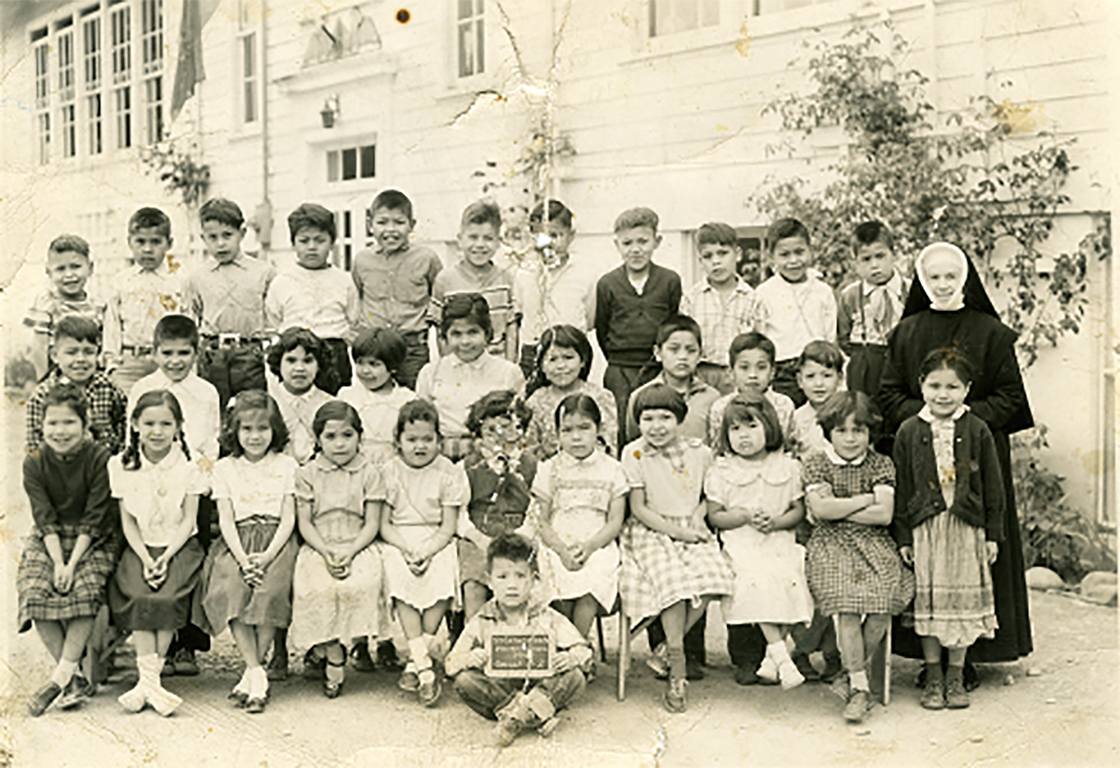
The sisters offered an official statement in 2009 on its role in the residential school system. “How could our good intentions have had such tragic consequences!” the statement reads in part.
But the sisters only acknowledge their role at four residential schools: Kuper Island, Kamloops, Mission and Lower Post.
A Tyee analysis, however, looked at institutions that had a similar goal of Indigenous cultural erasure going back to the 1860s and found that the Sisters of St. Ann worked at 22 Indigenous mission, residential, boarding, industrial, convent and day schools in B.C., Quebec and Alaska. They worked as administrators, teachers and in some cases, founders.
In response to the list of schools sent by The Tyee, the Sisters of St. Ann said that the Quebec province is a separate entity and has different leadership. In regards to the schools in B.C. and Alaska, the sisters shared they “are profoundly saddened by the residential school legacy and recognize that we must continue to take meaningful action to address the intergenerational trauma caused. Any abuse or deliberate suppression of a young person’s culture and spirituality, whether at a residential school, boarding school, day school or any other setting, is a tragedy,” adding they were “deeply troubled” by some of the experiences survivors shared.
It’s “absolutely necessary” to look beyond residential schools and also look at missions, day schools and industrial schools, said Raymond Frogner, head of archives for the National Centre for Truth and Reconciliation. The Tyee’s analysis is a “vitally important approach” to understand the cultural authority that the sisters wielded over Indigenous communities.
“Call it a mission, call it a residential school, call it a hospital;” they all had a role in cultural erasure, said Frogner.

The year the sisters released their 2009 statement, they were also supposed to be helping raise funds for survivors as part of the 2007 Indian Residential School Survivor Agreement. Dozens of Catholic entities across Canada, including the Sisters of St. Ann, agreed to make their “best efforts” to raise $25 million for survivors of the over 130 recognized residential schools. By 2015, only $3.7 million had been raised and the church was released of any further financial obligations.
The Tyee reviewed Canada Revenue Agency filings from the Sisters of St. Ann going back to 2005 and did not find any contributions made to the fundraising efforts.
At the time the agreement was made, the Sisters of St. Ann had over $30 million in long-term investments and $32 million at the time of their 2009 apology. By 2014, the sisters had $48 million in long-term investments.
When asked about the fundraising efforts for $25 million, the Sisters of St. Ann responded by email stating, “when it became clear that commitment would not be met by our partners, we focused instead on donations to causes that would help Indigenous peoples and communities. Since 2012, the SSA has provided over $3.5 million in donations to community partners which make annual distributions to Indigenous-led or Indigenous-serving charities or First Nations.”
CRA filings show that the sisters have donated almost $43 million to various charities between 2007 and 2020, and $6.3 million moved off balance sheet through a partnership with the Victoria Foundation that manages the sisters’ donations through Esther’s Dream Fund. Other top recipients were religious groups. The sisters donated, for example, $4.2 million to the Canadian Catholic Organization for Development and Peace, $3 million to the Sisters of St. Ann-founded Jane Rowan Society that operates Little Flower Academy, $3 million to the Diocese of Victoria and $2.7 million to the Sister of St. Ann-founded charity, Marie Esther Society. (Francesca Fionda, the author of this piece, attended Little Flower Academy, graduating in 2005.)
The history of the Sisters of St. Ann has been described as one that “parallels that of British Columbia.”
But they did far more than parallel; at times they directed and shaped the province’s history.
As survivors share their stories and ground penetrating radar confirms more graves at former school sites, a fuller picture of the sisters’ role in colonization is beginning to take shape. Good intentions don’t excuse what happened, says Whitebean. Because in the end, children were hurt.
Twenty-two mission, day, industrial and residential schools
The history of the sisters goes back over 170 years. The Congregation of the Sisters of St. Anne was founded in Quebec by Blessed Marie-Anne Blondin in 1850. Their mission was to educate poor, rural children and open schools for boys and girls — “a proposal considered ‘very subversive’ at her time,” according to the Canadian Religious Conference. The congregation eventually expanded its work across the country and the globe with ministries in Cameroon, Chile, Haiti and the United States.
In 1858, at the start of the gold rush, four sisters and a lay woman made the two-month voyage from Quebec to Victoria, B.C. by ship and train across Panama. When they arrived, “the women were shown to the log cabin that was to be their home and school, on a piece of land which remains as part of the grounds of St. Ann’s Academy today,” according to the history described by St. Ann’s Academy. In this new western province that was not yet part of Canada, the sisters dropped the “e” and became known as the Sisters of St. Ann.
The sisters are credited with bringing Catholic education to B.C. with the opening of St. Ann’s Academy in Victoria. Their original goal as Christian missionaries was “educating Indigenous children,” according to a brief history written by the Global Sisters Report. After arriving in Victoria, however, their scope expanded. Over the next 150 years, they opened, operated and staffed 10 hospitals and staffed dozens of schools across B.C., the Yukon, Washington and Alaska.
At a 2020 Catholic Educators Conference, the order received the inaugural Sisters of St. Ann Award, which is named after them, for their “lifetime of service in education, nursing and social justice in the province.” Reflecting on their legacy, a press release for the award noted that, “the sisters were astute businesswomen, acquiring land in the region that would be used for schools and health-care centres, all while they were working full time as principals, teachers and health-care professionals.”
Some of the schools they founded or taught at are still in operation today including: St. Ann’s Academy in Kamloops, St. Augustine and Little Flower Academy in Vancouver.
In the 1960s, the Sisters of St. Ann reached a peak of about 300 members in B.C. according to a 2016 Vancouver Sun article highlighting their millions in financial and real estate donations. “It’s hard to think of another modest-sized group that has done as much to change the face of British Columbia,” the article reads.
The Tyee reviewed survivor testimonies, online archives, Indigenous research, academic papers and books written by the Sisters of St. Ann and found the group likely established, taught at or worked at 22 mission, day, industrial and residential schools in B.C., Yukon, Alaska and Quebec going back to the 1800s.
‘Brainwashed’ to feel ashamed of Indigeneity
In August 2021, I sit with P’kul-te-naud and her family member Halquit, 70, in P’kul-te-naud’s kitchen in Duncan. P’kul-te-naud is sorting through a pile of photos from her school days.
Everyone involved in residential and day schools, including the sisters, have to be held accountable for their role, says P’kul-te-naud.
“I think that it's important that society does get to hear and learn and be enlightened of what's been done to us,” says P’kul-te-naud.
Both P’kul-te-naud and Halquit had parents that were forced to attend residential schools. Both spent part of their childhood in day schools run by the Sisters of St. Ann.
Every morning at St. Catherine’s Indian Day School, in Duncan, B.C., students had to stand outside and sing “God Save the Queen,” says P’kul-te-naud. “I got a nosebleed one day because it was so cold out.”
After that, students would kneel and pray at their desks before the start of class, again before recess, after recess, before lunch, after lunch and at the end of the day. “We'd have to pray on our knees again to be able to go home,” she says.
“Religion is supposed to save you, not kill you,” says Halquit. He spent one year at St. Catherine’s before getting kicked out and spending the rest of his education at a Duncan public school.
P’kul-te-naud went to St. Catherine’s from Grade 1 to 4. From Grade 5 to 7 she attended St. Ann’s. She was at St. Ann’s the last school year it was in operation, in 1963–64. She also spent a few months at St. Mary’s residential school in Mission, B.C. as a boarder, where the Sisters of St. Ann also worked. She was bused to another school in the area.
P’kul-te-naud says the memories she has of these schools are mixed. She recalls one nun who was kind to her and another who was extremely strict and known for pulling ears and whacking students’ knuckles with a ruler. She describes moments of fear, embarrassment and being “brainwashed” to feel ashamed of her Indigeneity.
The intergenerational impacts of the colonial school system are something P'kul-te-naud has been reflecting more on. She doesn’t recall seeing anyone being punished for speaking their Indigenous language at school — because, she says, by the time she was in school, her parents and their parents had been punished for speaking Hul’q’umi’num and were forced to learn English.
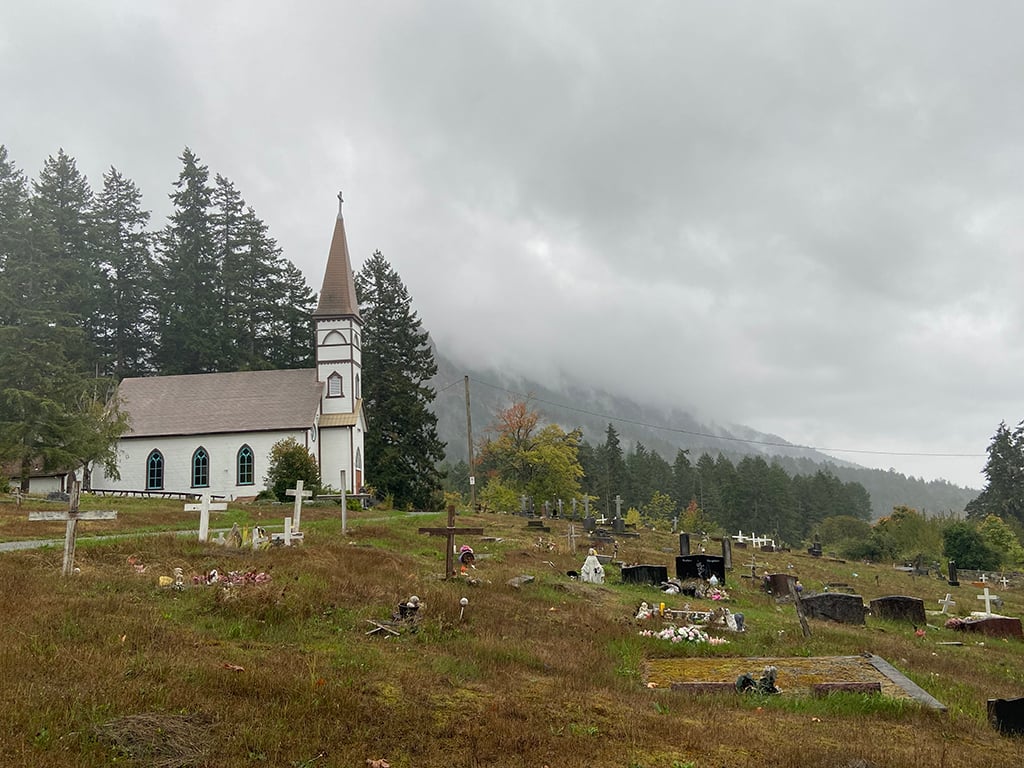
Going back to the 1600s, Christian settlers founded mission schools with the goal to convert, evangelize and "civilize" Indigenous communities across North America. These mission schools were the origin of residential schools and day schools in Canada.
In the late 1800s, the Government of Canada had formalized and funded Indian Day Schools and the residential school system. Frequently, the RCMP would take Indigenous children from their families and force them to attend residential schools far from their communities. Day schools operated over a longer period of time than residential schools with the last one closing in 2000.
While children at Indian Day Schools were permitted to go home after school, the schools shared a similar goal of cultural assimilation.
Survivors have shared stories of physical, emotional and sexual abuse at day schools and residential schools. This system led to language erasure and intergenerational trauma. Approximately 60 per cent of residential schools and 47 per cent of day schools were operated by the Catholic Church. The rest were operated by Anglican, United and Presbyterian Churches.
St. Catherine’s was one of 699 federally-operated day schools. It originally opened as Cowichan Indian Day School in 1923 and then was taken over by the federal government in 1940. It’s unclear whether the Sisters of St. Ann were involved in the school before 1940; by then, however, the Sisters of St. Ann staffed the school.
A 1950 missionary record describes an open house the school hosted to celebrate its 10th anniversary. At the time, the school had 127 registered children from five nearby reserves. Seeing Indigenous school girls play competitive sports was a sure sign of their “emancipation,” the Sisters of St. Ann told the record.
Since that time former students at St. Catherine’s have come forward to share stories of abuse and racism and their journeys towards healing.
The sisters were among the first settlers in the Cowichan Valley. In 1864, they applied to purchase 400 acres of land on the unceded territory of the Cowichan people from the colonial government for $400.
Catholics and Protestants invested heavily in overseas missionary work, according to the Truth and Reconciliation Commission. The Oblates, Jesuits and Franciscans were among the most well-known Catholic orders, supported by female religious orders such as the Grey Nuns, the Sisters of Providence, the Missionary Oblate Sisters of the Sacred Heart and of Mary Immaculate and the Sisters of St. Ann. The goal of this missionary work was to convert non-Christians and provide a moral justification for colonization of the land and culture.
The Sisters used the land to build a farm and a school. From 1864 to 1876, the school, known as St. Ann’s, operated as residential school for Indigenous girls.
The school has been described in a number of sources, including the book A Century of Service, 1858-1958: A history of the Sisters of Saint Ann and their contribution to education in British Columbia, the Yukon and Alaska, published by a Sister of St. Ann in 1999, which explicitly refers to it as a “residential school.”
One story told in the book involves a Cowichan Tribes community member who shared his resentment of the sisters for “dispossessing his forefathers of their territories” through the government’s land pre-emption program. When the sister responded that “the whites did it for your good,” the Cowichan Tribes member told her, “Oh, no. They did it for themselves.”
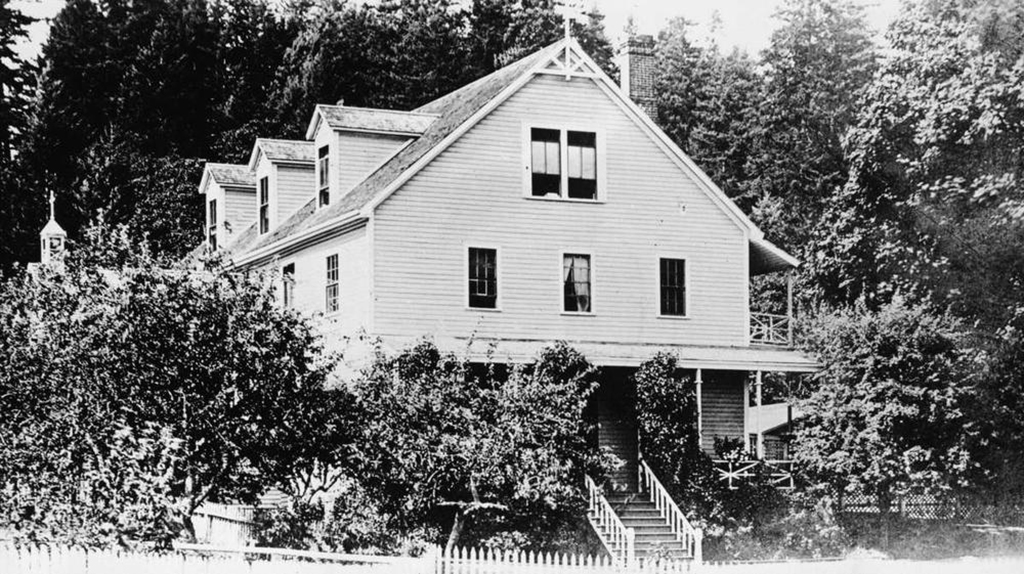
In 1979 the sisters leased the property to the Vancouver Island Providence Community Association to operate Providence Farm, a therapeutic community for people with mental health challenges. In 2009 the sisters gifted the property to the association. The property value is now assessed at $1.7 million.
Providence Farm, named in memory of Sister Mary Providence who founded the school, disagrees with the term “residential school,” preferring to call it a “boarding school.” A volunteer at Cowichan Valley Museum Archives also wrote in an email to The Tyee that Providence Farm “was NOT an ‘Indian Residential School’ but offered education to any students.”
Sister Marie Zarowny, president of the Sisters of St. Ann, limits the term "residential school” to the four schools listed in the 2007 settlement agreement. In an email she maintained that the sisters only taught at residential schools in Kuper Island, Kamloops, Mission and Lower Post.
While St. Joseph’s near Williams Lake is listed as a residential school, Zarowny wrote it “was established to teach children of settler and Métis families” and it was not a residential school in the years the sisters were there from 1876 to 1888.
During that time, “Sisters and other staff taught the prescribed curriculum,” Zarowny wrote in an email to The Tyee.
Parts of that “curriculum” were described this January when Chief Willie Sellars sat in front of members of Williams Lake First Nation and the media to share the preliminary results of his nation’s investigation into the former grounds of St. Joseph’s Mission.
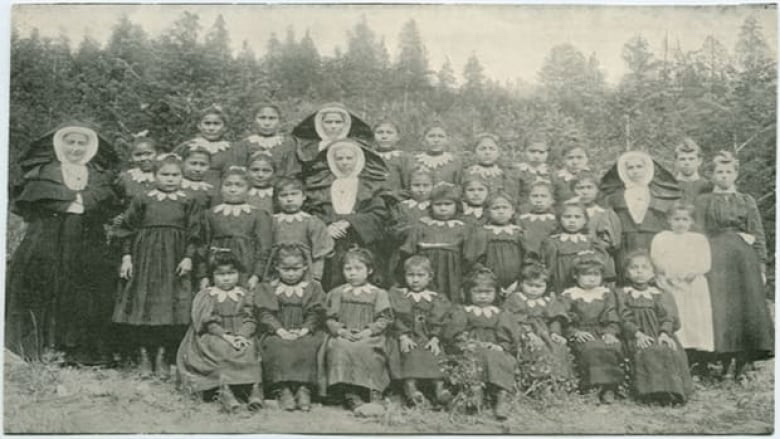
The school first operated as an industrial school, Chief Sellars explained. “First Nations pupils performed labour-intensive tasks including serving white children and staff, timber splitting, cattle rearing, farming and sowing. During this time the Sisters of St. Ann ran St. Joseph's Mission in concert with the Oblates of Mary Immaculate,” he said.
For decades there were reports of neglect and abuse at the facility, he added. “And worse, there were reports of children dying or disappearing.” Their investigation found that there could be 93 children buried around St. Joseph’s Mission. So far they’ve only examined 14 out of 470 hectares.
The real story of what happened at Saint Joseph's Mission has been “intentionally obscured,” Chief Sellars said.
“There is clear evidence that religious entities, the federal government and the RCMP have knowingly participated in the destruction of records and a coverup of criminal allegations.”
Institutes designed for cultural erasure
Last October, after the first National Day for Truth and Reconciliation, B.C. historian Kelly Black started writing a social media post about how the convent at St. Ann’s Academy in Victoria was once a residential school. He looked around for various sources and noticed that the Wikipedia entry no longer mentioned it was once a residential school.
That part had been deleted by the archivist for the Sisters of St. Ann.
The page’s revision history shows back and forth edits, with some users stating it was a “residential school,” followed by edits from another user saying it had “never” been a residential school.
Black reinstated the term again, citing multiple sources. The current wiki version still includes Black’s description and sources.
St. Ann’s Convent School started in a small log cabin. It’s where the first four Sisters who arrived in B.C. in 1858 lived and taught. According to a now-removed page from the Sisters of St. Ann’s website, “at first the number of children to come to the school was small and consisted of First Nations and Métis children.” The building and capacity quickly grew and expanded to include non-Indigenous children.
The log cabin, now located at the Royal BC Museum, is one of the oldest buildings in Western Canada. The building that made up the expansions of St. Ann’s Academy was purchased from the sisters in 1974 by the B.C. government. In 1989 it was designated a national historic site. But the plaque outside the site has been flagged for review by the federal government. This can happen because of “outdated language or terminology, absence of a significant layer of history, factual errors, controversial beliefs and behaviour, or significant new knowledge.”
“The goal of the Indian residential school system was to assimilate and eliminate Indigenous culture,” says Black. Projects such as missions, farms, convents, day schools or residential schools were integral to that goal, “and the sisters helped run them.”
While the terms differ in a legal and historical context, the goal of these schools to assimilate, Christianize and acculturate children was the same, says Wahéhshon Shiann Whitebean, who is conducting PhD research on the Indian Day School in her home community and has done Kanien'kéha language revitalization work.
“Residential schools might have also been known as industrial schools or boarding schools,” she says. Most were started by religious orders and administered or funded by federal or territorial governments.
“Children would be taken away from their family and community and placed in the schools. They lived at the school for most of the year. Sometimes they returned home for summers or holidays, sometimes they didn’t and, unfortunately, many children never returned home.”
An estimated 4,100 to 6,000 children died at residential schools across the country. Hundreds were buried in unmarked graves near school grounds. The Truth and Reconciliation Commission found that the schools had unsanitary conditions, were crowded and poorly ventilated. Many children likely suffered from malnutrition and died from disease. Some died while trying to return back home. Many children died far from home, without their families getting information.
Mission schools were similar to day schools or residential schools but were established before the federal government started funding the schools. Some mission schools go back to the early 1600s and were initiated by various religious groups.
Records of what mission schools were like are limited, says Whitebean, and the records that do exist often don’t include accounts from Indigenous students and parents.
While there isn’t a typical experience, generations of Kahnawà:ke members shared stories with Whitebean of physical, verbal, sexual, emotional and spiritual abuse.
“For many First Nations, Inuit, and Métis children, the loss of language, culture and identity caused by Day Schooling are traumatic experiences that spanned several generations,” Whitebean wrote in her 2019 master’s thesis.
In 1915, in her community of Kahnawà:ke, the Sisters of St. Anne were brought in to teach at the Catholic day schools in the community, replacing local Mohawk teachers who taught in the Mohawk language.
“Indigenous children in Canada attended Day Schools in greater numbers than Residential Schools,” she writes, “and we still know little about their experiences.”
Duncan Campbell Scott, who was head of the Department of Indian Affairs at the time, “went after" the day schools in Kahnawà:ke because Indigenous teachers were teaching in an Indigenous language, says Gerald Reid, professor of anthropology and sociology at Sacred Heart University. This meant the schools in Kahnawà:ke went against the government's cultural and linguistic assimilation policies.
The community resisted the replacement of their teachers. In June 1947, Matthew Lazare of Kahnawà:ke addressed the Senate denouncing the Indian Act and the day schools in his community.
“The operation of Indian day or residential schools is not approved by this band, if it will be operated by any religious denomination. We do not approve of the Nuns or Sisters of Saint Anne’s to teach our children as they do not teach our children enough, the only thing they learn is praying and singing and marching to church during school hours.”
Despite the community’s resistance, the Sisters of St. Anne continued to have a presence in the community for decades. Their presence had a “profound effect” on the loss of language, says Reid.
Many of the teachers were very young, didn’t speak the Indigenous language and had very little teaching experience or qualifications, says Reid. This added to the frustration of the community who lost Mohawk teachers.
The RCMP, Indian agents, religious orders, priests and sisters built a stronghold on the whole community, says Whitebean.
It’s hard to say how many Sisters taught in residential schools and for how long, says Sister Marie Zarowny. The sisters moved around to different institutes over the years and worked in a variety of roles.
They were teachers, supervisors of girls residences, cleaners, launderers and worked in food preparation, she says. “We weren't in charge of the [residential] school,” says Zarowny. “We weren't the administrators of the school, we have none of the official records of the school.”
But according to obituaries, sisters were also principals and directors at residential schools.
Sister Lorraine Beatrice LaMarre, who died in 2013, was the principal at Kuper Island Residential School. She also taught at Kamloops Indian Residential School, at St. Ann’s Academy in Victoria, St. Catherine’s Day School in Duncan and at Little Flower Academy in Shaughnessy, Vancouver.
Sister Helen Gertrude Worth, who died in 2015, was the “directress of junior and senior students” in Kamloops and Kuper Island Residential Schools. She was also the principal of the former elementary school at Little Flower Academy.
In Kahnawà:ke, the sisters were teachers, principals and administrators of the day schools, says Gerald Reid. The sisters’ work was overseen, in part, by local Jesuit priests and the Department of Indian Affairs.
The sisters also staffed schools in Alaska. They arrived in 1886 and taught with Jesuit priests and brothers. The sisters eventually worked at five different missions and boarding schools in Alaska with Indigenous students, including St. Mary’s and Holy Cross Mission.
In an interview, Zarowny, when asked about the sisters’ missionary work in Alaska, says that Indigenous people there “only expressed gratitude to us for the education we provided.” The missions were “often in far off villages and they were grateful for the education they were getting.”
She added that the school at Copper Valley was owned by the Jesuits and was open to Indigenous and non-Indigenous children, who “came by choice.”
The Alaskan schools, Zarowny says, “were a different reality and cannot be compared to schools in B.C. that were part of the Government of Canada’s colonization process.”
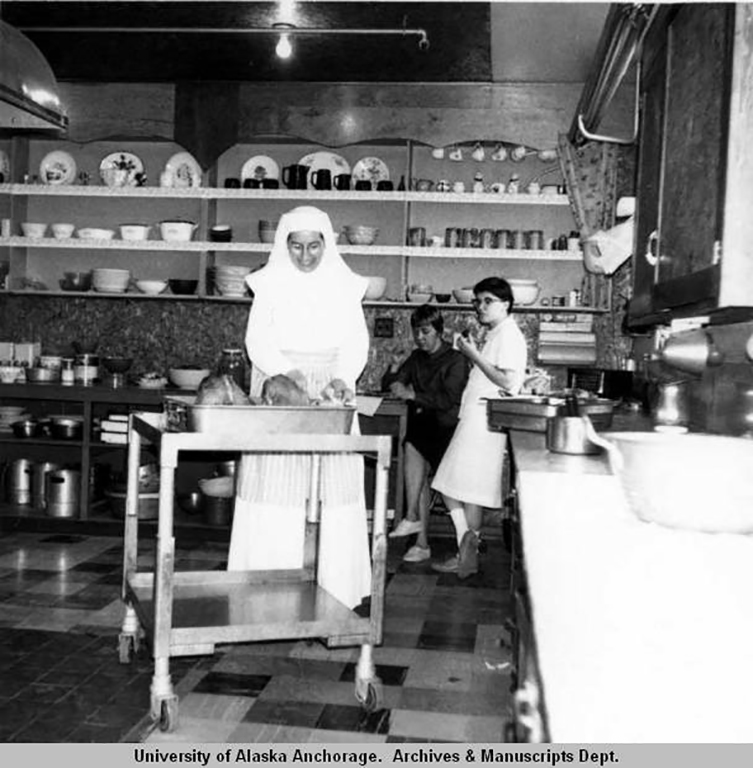
An analysis by Indian Country Today found that there is so little information available about the experiences of Indigenous people in the U.S., it’s hard to compare it with Canada’s residential school systems.
But there are documents that show that the systems were modelled off one another. The 1879 Davin Report, commissioned by Prime Minister John A. Macdonald, described America’s industrial schools for Indigenous children. Recommendations from the report led to the creation of Canada’s residential school system, according to UBC’s Indian Residential School History and Dialogue Centre.
In both Canada and the U.S., these schools were “ethnic cleansing through education,” says Paul Ongtooguk, who recently retired as director of Alaska Native studies at University of Alaska, Anchorage.
Ongtooguk, whose family is Inupiat, says that many missionaries who look back at their work are ignorant about the power imbalances and what was taken away from students. The teachings at these schools often went against Inupiat teachings essential for survival in the North, he says, forcing generations of people to unlearn what they were indoctrinated with.
Survivors from Holy Cross Mission where the sisters taught in Holy Cross, Alaska, shared their experiences of hunger, isolation and abuse in a 2018 story from Indian Country Today.
“The nuns punished the children violently for even the smallest infraction,” and were “constantly on guard against any intrusion of [Indigenous] culture among the children, preventing contact between them and the villagers of nearby Holy Cross,” the article reads.
The sisters have repeated their version of history for over a hundred years.
But as survivors speak out and archivists reframe the context of historical records, their role at these schools is becoming more clear; and an enduring and undeniable part of their legacy.
There is no one definitive source that we can look to for the full history of residential schools. But Frogner and his team at the National Centre for Truth and Reconciliation are bringing together as many documents as they can. After the Indian Residential Schools Settlement Agreement was signed in 2007, they were tasked with creating a permanent archive. They began pulling records from 104 religious repositories and 47 government offices.
Focusing on the little distinctions of whether any given school was a residential school, day school or a mission misses the point that these institutes were specifically designed for cultural erasure, says Frogner.
The sisters were firmly embedded in the colonial project and they played a central role in it, he says.
‘There’s not even the beginning of justice for all this’
Initially, compensation from the 2007 Indian Residential Schools Settlement Agreement was only available to survivors who boarded at federally run residential schools and claimed specific levels of abuse.
As of January 2022, “day scholars” — students who attended residential schools but went home each day — were also able to apply for compensation. Students who were harmed at day schools can apply for compensation through a separate class action settlement until July 13, 2022. Eligible claimants must have attended schools on a list, of “federally established, operated, maintained and controlled Day Schools.”
But gaps remain, says Whitebean. If students were harmed at a school that existed before the timeframe or was operated by an organization other than the federal government, they're not eligible for compensation. Survivors also have to fill out restrictive forms that have big gaps in how harm is defined, says Whitebean. She says many refuse the money or just accept the minimum because the process is too triggering and traumatizing.
“There’s not even the beginning of justice for all this,” says Whitebean.
Many schools, including industrial schools, day schools, mission schools and convents were left out of these agreements, says historian Kelly Black. The idea that St. Ann's Academy and Providence Farms were not residential schools “only holds water” if you look at the settlement, he says.
“If you understand residential schools to be a place where First Nations children were removed from their communities, and forced to assimilate to settler culture, then there's no question” that these schools served as residential schools, Black adds.
Sister Zarowny believes that the Sisters of St. Ann took responsibility for their role in the residential school system by fully participating in the Truth and Reconciliation Commission and in the settlement process.
Catholic entities in the the Indian Residential School Settlement Agreement agreed to pay $29 million to the Aboriginal Healing Foundation, provide $25 million for in-kind services to survivors and raise $25 million for survivors. But only $3.7 million was raised for survivors and many of the in-kind services were religious and evangelization work.
In an email, the Sisters of St. Ann said they paid a “proportionate amount of the $29 million” contributed to the “in-kind” services and the Truth and Reconciliation Commission hearings in Victoria and Vancouver.
Court documents show the Sisters of St. Ann committed to providing $250,000 towards the Aboriginal Healing Fund and $300,000 towards in-kind services.
“We have accepted responsibility in being part of a system that did bring about great harm to Indigenous peoples,” Zarowny says.
She added that the organization's main focus now towards reconciliation is to reproduce documents and archives and to digitize them so that they will be readily available to First Nations communities.
Whitebean disagrees that the sisters and the Catholic Church as a whole have been held accountable for the establishment of the schools and the abuse that took place there.
In addition to holding the institutions accountable, Whitebean says she’d like to see surviving individuals who perpetrated abuse at the schools held accountable.
“Specific individuals, whether or not they're a priest or a nun, shouldn't be protected,” she says. “Police or teachers, who are just roaming free, who multiple living people named and identified as their abusers. That's unacceptable. How could that happen? How could that be possible?”
The perpetrators of the past have become “nameless” and “faceless,” she says. But the intergenerational trauma continues.
As of August 2021, there were 21 remaining sisters in the Pacific Northwest with an average age of 86. As of October 2020, there were 148 sisters in Quebec, 47 in the U.S. and 44 in Haiti.
Over the years, the sisters have shared some regrets. But many distanced themselves from full responsibility or awareness of the harsh conditions many Indigenous children were subjected to.
“All of us carry just enormous regret and sorrow for the suffering that children who were in our care suffered," Sister Marie Zarowny, president and board chair of the Sisters of St. Ann, told the CBC this June. "It's terrible to think that happened when we were there and we didn't know about it."
As early as the 1970s, one sister, who had taught at Kuper Island, Kamloops and St. Mary’s Mission residential school, looked back at their legacy with some clarity.
“We were forcing our culture and our religion. But we did it in the name of Christianity, and we've done a lot of harm,” Sister Norma Jeffs said in a 1979 interview with the history program of the provincial archives of B.C.
“I know most people, you know, that have worked with [Indigenous children] admit now what we did was wrong and we’re trying to make that up. I don't know whether we ever will,” she continued.
In an email to The Tyee, the sisters acknowledged that by “holding positions in the Indian Residential School System, they contributed to a system that was destructive towards Indigenous children and are immensely sorry for the suffering of children, their families and communities.”
The sisters have recently transferred ownership of their B.C. archives to the Royal BC Museum to be digitized and are funding an archivist at the museum to facilitate “the transparent management of the archives.”
This agreement to transfer satisfies a call from the First National Leadership Council, backed up by the Royal BC Museum, to release the records and make this history transparent and accessible to survivors and the public.
Back in the Cowichan Valley, Halquit says he sees his community gaining ground through education and language revitalization. “Having our young ones speak our languages, some of them speak better than me,” he says with a laugh. It’s something that brings him both pride and some embarrassment.
P’kul-te-naud says learning Hul'qumi'num is next on her list. “I am learning a lot about my own culture and my own history.” She and Halquit describe themselves as “junior Elders,” continuing to learn and share their experiences.
P’kul-te-naud already has a spot in her house where she’s going to hang her certificate once she finishes her studies. “I'm getting a degree and that's my way of fighting back.”
In the second part of this two-part investigation, The Tyee’s education reporter, Katie Hyslop, takes a look at how Little Flower Academy, a school founded and run by the Sisters of St. Ann to serve settlers in Vancouver, and which is rated one of the top-performing secondary schools in the province by the Fraser Institute, downplayed the order’s colonial roots. Alumnae say their founders were venerated, and the tougher aspects of their history were skirted — and they want answers. ![]()
Read more: Indigenous, Rights + Justice, Education


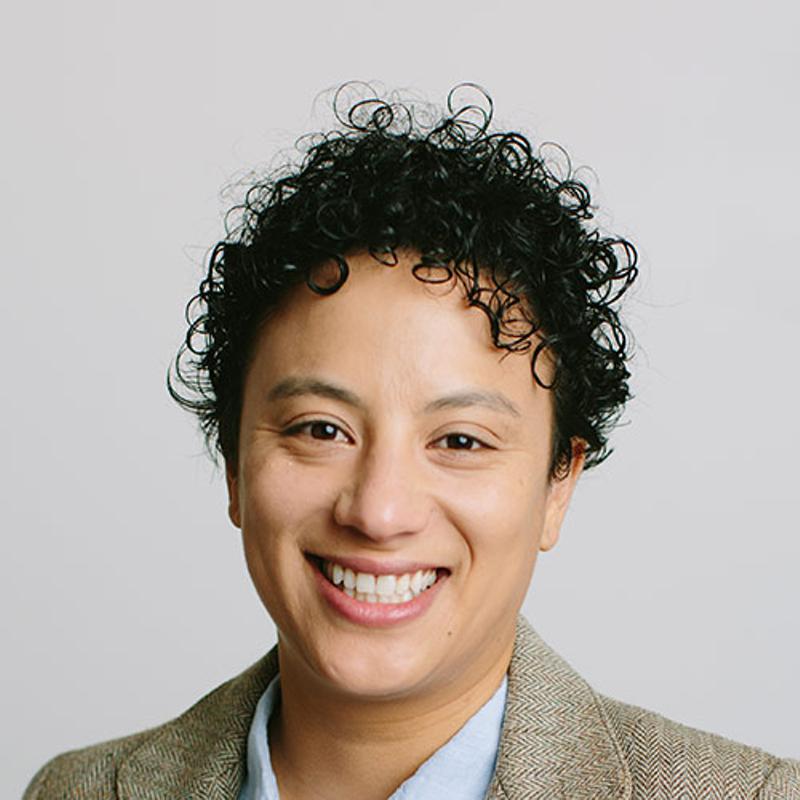
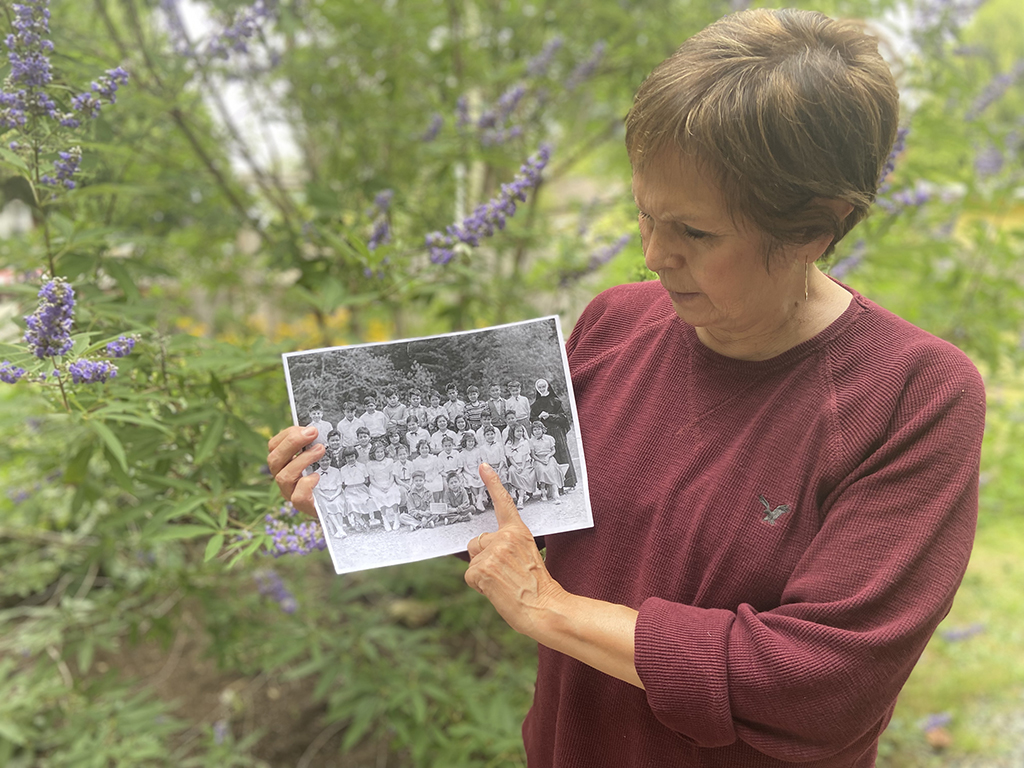












Tyee Commenting Guidelines
Comments that violate guidelines risk being deleted, and violations may result in a temporary or permanent user ban. Maintain the spirit of good conversation to stay in the discussion and be patient with moderators. Comments are reviewed regularly but not in real time.
Do:
Do not: